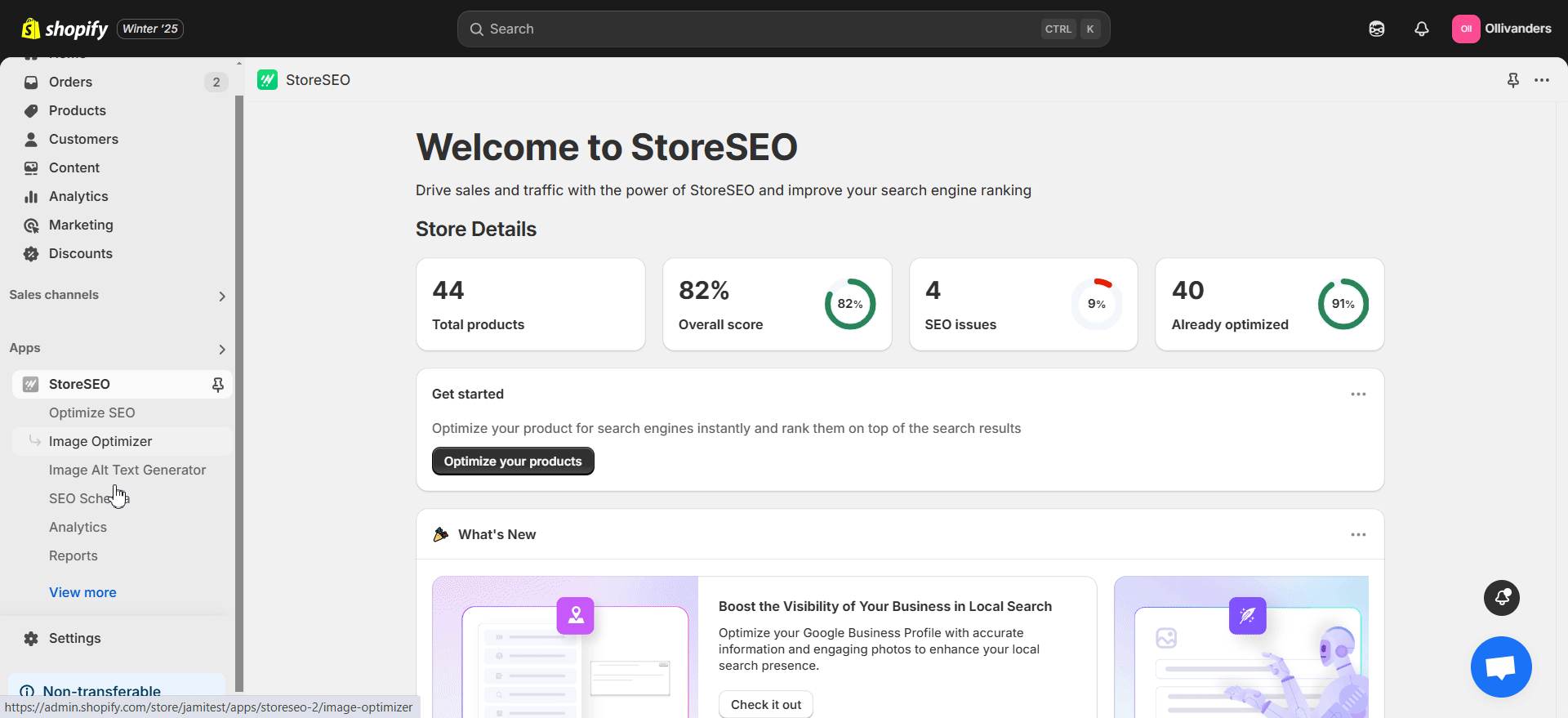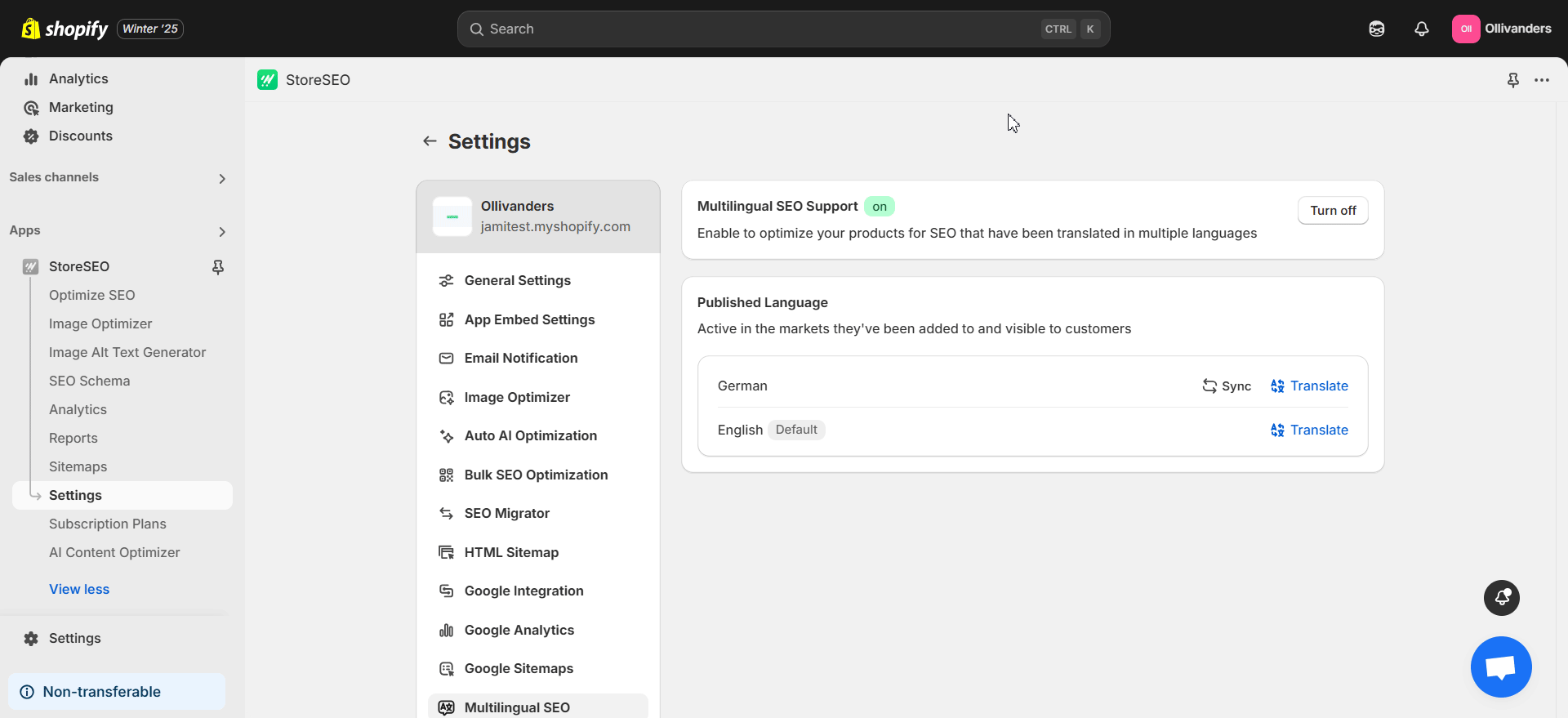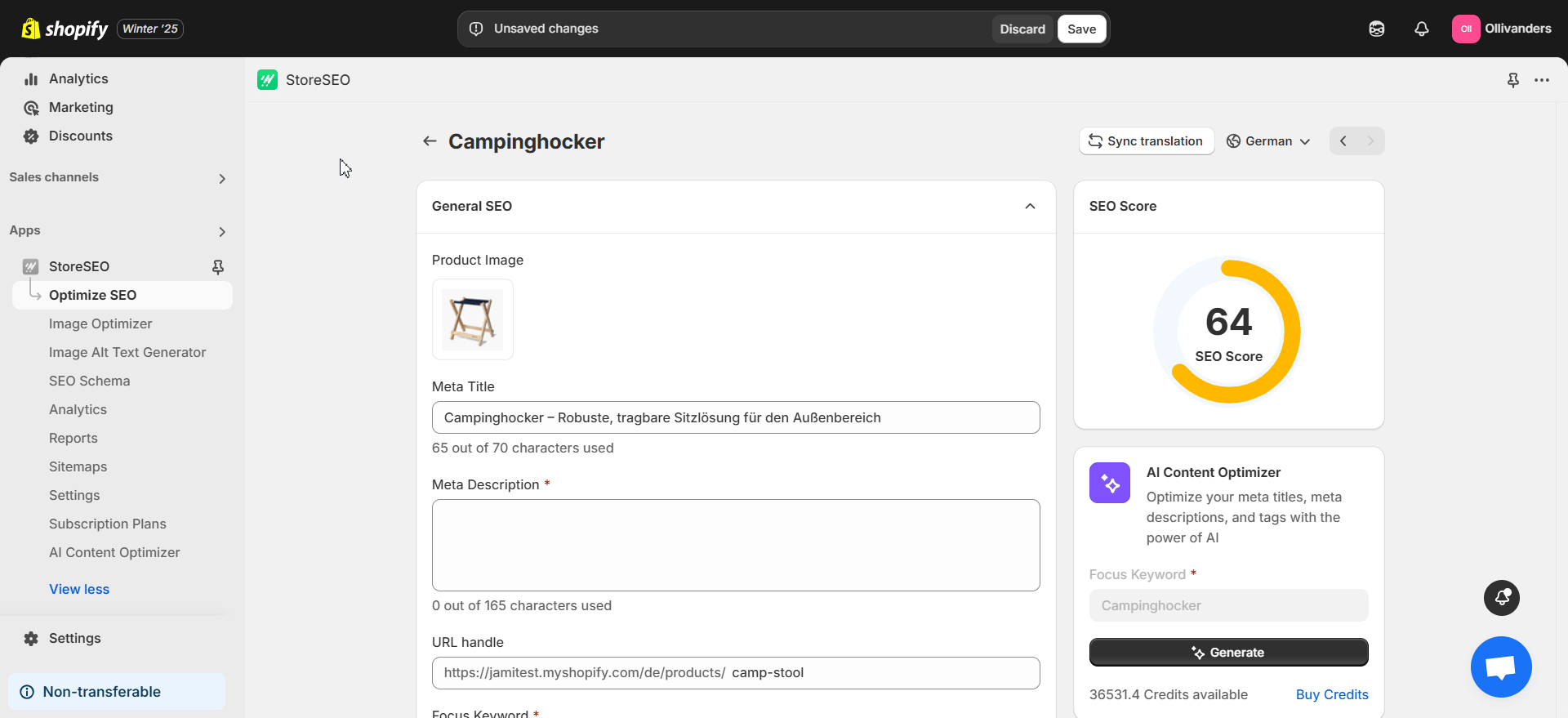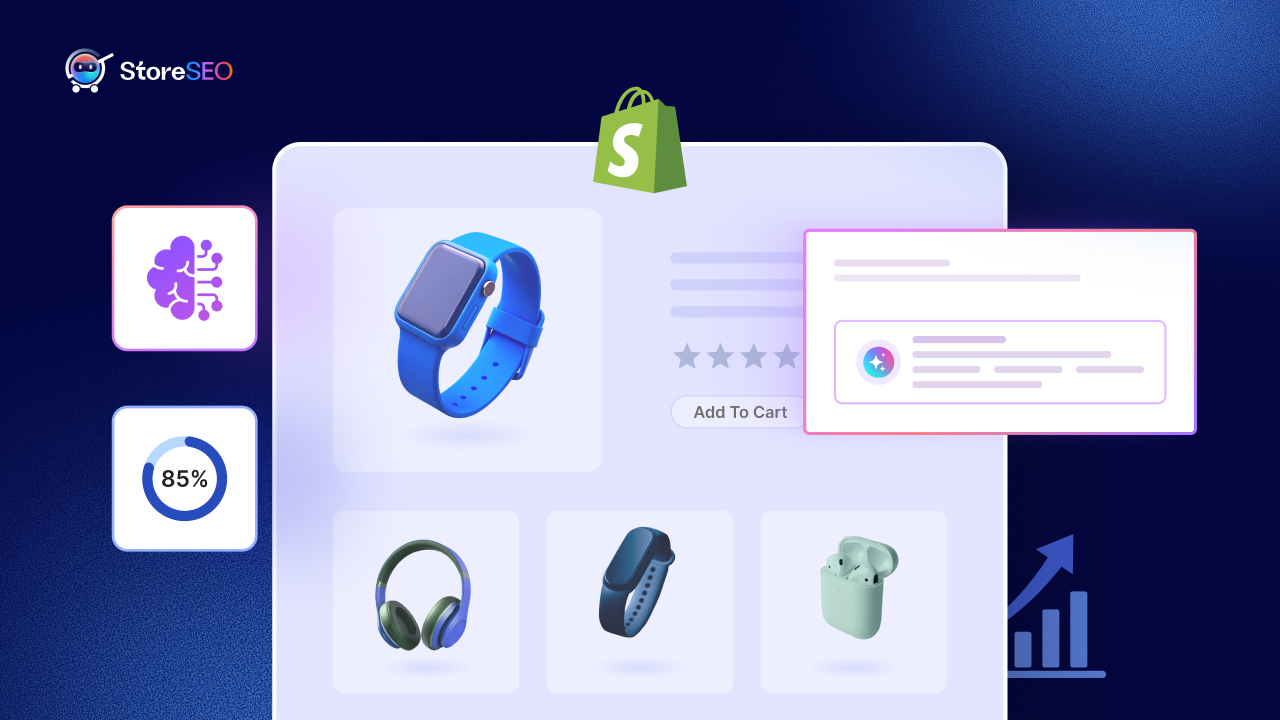Have you translated your Shopify store’s products into various languages but need to optimize them for SEO? With StoreSEO’s Multilingual SEO Support functionality, optimizing these product pages is easier than ever. Thanks to this feature, you can easily optimize your translated products to improve your chances of appearing via multilingual search queries. In this blog, we will guide you through the entire process via a quick app tutorial. So, let us get started!
![StoreSEO Brings Multilingual SEO for Shopify [With Full App Tutorial for Users] 1 Blog Banner - StoreSEO Brings Multilingual SEO for Shopify [With Full App Tutorial for Users]](https://storeseo.com/wp-content/uploads/2025/02/1-StoreSEO-Multilingual-SEO-Blog.jpg)
What Is Multilingual SEO? Why Is It Important for Shopify Stores?
Multilingual SEO in Shopify means optimizing your store’s content for several languages across the same or different countries. The goal is to ensure that search engines can properly index your store and display the right language versions to various audience groups.
![StoreSEO Brings Multilingual SEO for Shopify [With Full App Tutorial for Users] 2 What Is Multilingual SEO? Why Is It Important for Shopify Stores?](https://storeseo.com/wp-content/uploads/2025/02/2-StoreSEO-Multilingual-SEO-Blog.jpg)
Using language-specific URLs, localized content and other practices, Multilingual SEO helps improve visibility in search results across different languages. This is why Multilingual SEO is essential for Shopify merchants who are expanding into global markets. With this approach, Shopify stores can break language barriers, reach more customers and maximize revenues. Here are the key benefits in a nutshell:
- Enhanced Customer Experience: Many customers prefer shopping in their native language. So, you get to build trust and boost engagement with a well-optimized multilingual store.
- Better Search Rankings: Search engines like Google prefer localized content. If you properly implement Multilingual SEO, your store’s pages have a better chance of ranking higher in different languages. This will also help drive more organic traffic to your shop.
- Increased Conversions: Customers are more likely to place orders when your product meta titles, meta descriptions & others are translated into their preferred language and optimized.
- Competitive Advantage: Many Shopify stores are available only in English. With a Multilingual SEO strategy, you can stand out from competitors and attract a broader audience.
- Compliance with Local Laws: Some countries have legal requirements for the language used in eCommerce stores. By optimizing for multiple languages, you get to stay compliant and avoid potential legal issues with your Shopify business.
How StoreSEO Can Help Boost Your Multilingual SEO Strategy
StoreSEO’s handy Multilingual SEO functionality lets you optimize several important SEO factors of a translated product based on the language used for the translation. Here is a summary of all that you are able to optimize in a translated product with our advanced app:
- Meta title
- Meta description
- Focus keyword
- URL handle
Plus, you can also check the translated meta title, meta description and URL handle through the preview snippet section when optimizing the product. And if you have the AI Optimizer addon activated, you get to instantly generate the meta title and meta description based on your focus keyword and the language.
![StoreSEO Brings Multilingual SEO for Shopify [With Full App Tutorial for Users] 3 How StoreSEO Can Help Boost Your Multilingual SEO Strategy](https://storeseo.com/wp-content/uploads/2025/02/3-StoreSEO-Multilingual-SEO-Blog.jpg)
This process saves your time and all the optimizations boost the search engine visibility of your products in different languages. So, you have better discoverability in various target markets using multiple languages.
How to Configure StoreSEO’s Multilingual SEO Support Feature?
Ready to find out how to configure StoreSEO’s Multilingual SEO Support feature and optimize your translated Shopify products? From translating the products to optimization, we will present a comprehensive app tutorial for users. Let us dive right into it!
Step 1: Translate Your Store’s Products
Remember to add translations for your Shopify store’s products. You can use the Shopify Translate & Adapt app for this. This app will be installed automatically after you have added a new language to your shop.
If the languages are already published, install the app from the Shopify app store or from ‘Settings’ → ‘Languages’ in your Shopify store’s dashboard. Afterward, manually or automatically translate your product pages’ content with the app. Read this documentation for more information on managing languages in Shopify.
![StoreSEO Brings Multilingual SEO for Shopify [With Full App Tutorial for Users] 4 Step 1: Translate Your Store’s Products](https://storeseo.com/wp-content/uploads/2025/02/4-StoreSEO-Multilingual-SEO-Blog.png)
Step 2: Turn on Multilingual SEO Support
Now, open the StoreSEO app. In the left side panel, hit the ‘View more’ button. Next, navigate to ‘Settings’ → ‘Multilingual SEO’. To enable StoreSEO’s Multilingual SEO Support, click on the ‘Turn on’ button. From the ‘Published Language’ section, click on the ‘Sync’ button beside the published language used for translating your products. This will initiate the sync process. Once the sync is complete, you will get a message.

Step 3: Optimize Your Translated Shopify Products for SEO
In the left side panel of the StoreSEO app, go to ‘Optimize SEO’ → ‘Products’. Choose the translation for which you want to optimize products from the language selector dropdown. You will find this dropdown at the top. Now, click on the ‘Fix Issue’ button on the right side of the translated product that you want to optimize for SEO.

Based on the SEO Score, Basic SEO Analysis and Detailed SEO Analysis on the right side, optimize the translated product. Also, you will find the language selector dropdown at the top of a single product’s optimization screen. Refer to this documentation to learn more about product optimization using StoreSEO.

Easily Optimize Your Translated Shopify Products with StoreSEO
Multilingual SEO can be a game changer when it comes to becoming more discoverable through various languages. This can have a very positive impact on your sales and brand identity. So, use StoreSEO to optimize products translated into different languages and target the local audience by becoming more visible in multilingual searches.
Want to read more insightful articles like this one? Subscribe to our blogs to learn more about StoreSEO and Shopify SEO. If you face any difficulties, feel free to contact our dedicated support team. Good luck with your Shopify business!
Frequently Asked Questions (FAQs)
Still have queries? Check out these FAQs for a clear understanding of StoreSEO and its Multilingual SEO Support feature. Go through the answers to clear up any confusion you might have.
1. How to translate Shopify store’s products into another language?
To translate your store’s products into another language, you can use Shopify’s dedicated ‘Translate & Adapt’ app. For a quick guide, read this documentation. And go through this guide to learn more about managing languages in Shopify.
2. What SEO criteria can be met with StoreSEO’s Multilingual SEO support?
With StoreSEO, you are getting real-time SEO Score, Basic SEO Analysis and Detailed SEO Analysis when optimizing your translated product pages. With the help of these, you can optimize the product’s Meta title, Meta description, Focus keyword and URL handle for a well-rounded multilingual SEO strategy.
3. Is it possible to change the in-app interface language of StoreSEO?
Yes. To change the in-app interface language of StoreSEO, navigate to the footer section while the app is open. Here, you will find a language selector using which you can alter the interface language.
4. What other features does StoreSEO offer?
StoreSEO is an all-in-one, AI-powered Shopify SEO solution that offers a host of powerful features like:
- Image Optimization
- AI Content Generation
- Image Alt Text Generation
- SEO Reports
- Google Analytics Integration
- And much more
Install StoreSEO on your Shopify store to try out its advanced functionalities. Easily optimize your Shopify store for SEO and drive the search engine visibility of your business.
5. Which languages should be prioritized when translating a Shopify store?
When translating your Shopify store, the language that you need to prioritize first depends on multiple factors. So, you need to consider your business niche, target audience, geographical location, expansion strategy and others. Once you have researched these areas, you can make a list of the languages that need to be prioritized first. This will ensure the best possible outcome for your business.
6. What is the difference between multilingual SEO and international SEO?
Multilingual SEO refers to the process of optimizing for SEO targeting multiple languages used in the same or different countries. On the other hand, international SEO is the process of optimizing for SEO across several countries.
Suppose, you are operating a Shopify store in Canada. With a multilingual SEO approach, you can optimize the store in both English and French languages. But with international SEO, the primary focus is on multiple countries and not always on the language. So, an example of international SEO is optimizing your eCommerce shop for English-speaking customers from USA, UK and Australia.


![Featured Image - StoreSEO Brings Multilingual SEO for Shopify [With Full App Tutorial for Users] - Blog](https://storeseo.com/wp-content/uploads/2025/02/1-StoreSEO-Multilingual-SEO-Blog-1.jpg)







